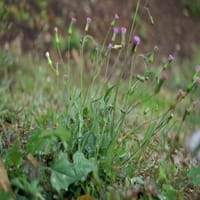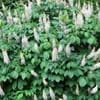Life Span
Perennial
Annual
Type
Shrub
Flowering Plants
Origin
Southeastern United States
Eastern Africa, Middle Africa, Southern Asia
Types
Not available
Not Available
Number of Varieties
Not Available
Habitat
Bluffs, Coastal Regions, Stream side, Woods
Cultivated Beds
USDA Hardiness Zone
5-9
8-11
Sunset Zone
Not Available
Not Available
Habit
Spreading
Upright/Erect
Flower Color
White, Pink
Pink, Lavender, Violet
Flower Color Modifier
Bicolor
Bicolor
Fruit Color
Brown
White, Brown
Leaf Color in Spring
Green
Green, Dark Green
Leaf Color in Summer
Dark Green
Dark Green
Leaf Color in Fall
Lemon yellow, Yellow green
Dark Green
Leaf Color in Winter
Not Available
Light Green
Leaf Shape
Palmate
Lyrate-pinnatilobed
Plant Season
Spring, Summer, Fall
Summer
Sunlight
Full Sun, Partial Sun, Partial shade
Full Sun, Partial Sun
Type of Soil
Clay, Loam, Sand
Clay, Loam
The pH of Soil
Acidic, Neutral, Alkaline
Acidic, Neutral, Alkaline
Soil Drainage
Average
Well drained
Bloom Time
Summer, Late Summer
Early Summer, Summer, Late Summer
Tolerances
Salt, Wind
Drought
Where to Plant?
Ground, Pot
Container, Ground, Pot
How to Plant?
Cuttings, Seedlings
Seedlings
Plant Maintenance
Low
Medium
Watering Requirements
Keep the Soil well drained, Requires regular watering
Average Water Needs
In Summer
Lots of watering
Lots of watering
In Spring
Moderate
Moderate
In Winter
Average Water
Average Water
Soil pH
Acidic, Neutral, Alkaline
Acidic, Alkaline, Neutral
Soil Type
Clay, Loam, Sand
Clay, Loamy, Sandy
Soil Drainage Capacity
Average
Well drained
Sun Exposure
Full Sun, Partial Sun, Partial shade
Full Sun, Partial Sun
Pruning
Remove damaged leaves, Remove dead branches, Remove dead flowers, Remove dead leaves
Remove damaged leaves, Remove dead branches, Remove dead leaves
Fertilizers
14-14-14 Fertilizer, Apply N-P-K, slow-release fertilizers
Self-fertile
Pests and Diseases
Edema, Powdery mildew, Verticillium Wilt
Ascochyta blight, Bacterial Blight, Powdery mildew
Plant Tolerance
Salt, Wind
Drought
Flower Petal Number
Single
Single
Foliage Texture
Coarse
Coarse
Foliage Sheen
Matte
Matte
Attracts
Butterflies, Hummingbirds
Butterflies
Allergy
Pollen
no allergic reactions
Aesthetic Uses
Cottage Garden, Showy Purposes
Showy Purposes
Beauty Benefits
Not Available
Not Available
Environmental Uses
Air purification, Wildlife
Air purification
Medicinal Uses
Antirheumatic, Colic, constipation, Piles
Astringent, Depurative, Diaphoretic, Diuretic, Expectorant, Febrifuge, Odontalgic, Ophthalmic
Part of Plant Used
Seeds
Flowers, Leaves, Shoots
Other Uses
Used for making soaps
Used as a vegetable
Used As Indoor Plant
No
No
Used As Outdoor Plant
Yes
Yes
Garden Design
Feature Plant, Foundation, Screening, Wind Break
Mixed Border
Botanical Name
AESCULUS parviflora
EMILIA sonchifolia
Common Name
bottlebrush buckeye, dwarf horse chestnut
Consumption Weed, Lilac Tasselflower, Shaving Brush
In Hindi
Bottlebrush Buckeye
Shaving Brush
In German
Buckeye Putzer
Rasierpinsel
In French
Bottlebrush Buckeye
Blaireau
In Spanish
bottlebrush Buckeye
Brocha de afeitar
In Greek
bottlebrush Buckeye
Βούρτσα ξυρίσματος
In Portuguese
Bottlebrush Buckeye
Pincel de barba
In Polish
Bottlebrush Buckeye
Pędzel do golenia
In Latin
bottlebrush Buckeye
Tondenti Peniculus
Phylum
Magnoliophyta
Magnoliophyta
Class
Magnoliopsida
Magnoliopsida
Order
Sapindales
Asterales
Family
Hippocastanaceae
Asteraceae
Clade
Angiosperms, Eudicots, Rosids
Angiosperms, Asterids, Eudicots
Tribe
Not Available
Senecioneae
Subfamily
Hippocastanoideae
Asteroideae
Number of Species
Not Available
Difference Between Bottlebrush Buckeye and Shaving Brush
If you are confused whether Bottlebrush Buckeye or Shaving Brush are same, here are some features about those plants to help you choose better. Many people think that these two plants have the same characteristics, but one can see Bottlebrush Buckeye and Shaving Brush Information and learn more about it. Fertilizers required for proper growth of Bottlebrush Buckeye are 14-14-14 Fertilizer, Apply N-P-K and slow-release fertilizers, whereas for Shaving Brush fertilizers required are Self-fertile. Hence, one should know the basic difference between Bottlebrush Buckeye and Shaving Brush if you are planning to have them in your garden to enhance its beauty.
<
Flowering PlantsImportance of Bottlebrush Buckeye and Shaving Brush
Want to have the most appropriate plant for your garden? You might want to know the importance of Bottlebrush Buckeye and Shaving Brush. Basically, these two plants vary in many aspects. Compare Bottlebrush Buckeye and Shaving Brush as they differ in many characteristics such as their life, care, benefits, facts, etc. Every gardener must at least have the slightest clue about the plants he wants to plant in his garden. Compare their benefits, which differ in many ways like facts and uses. The medicinal use of Bottlebrush Buckeye is Antirheumatic, Colic, constipation and Piles whereas of Shaving Brush is Astringent, Depurative, Diaphoretic, Diuretic, Expectorant, Febrifuge, Odontalgic and Ophthalmic. Bottlebrush Buckeye has beauty benefits as follows: Not Available while Shaving Brush has beauty benefits as follows: Not Available.
Compare Facts of Bottlebrush Buckeye vs Shaving Brush
How to choose the best garden plant for your garden depending upon its facts? Here garden plant comparison will help you to solve this query. Compare the facts of Bottlebrush Buckeye vs Shaving Brush and know which one to choose. As garden plants have benefits and other uses, allergy is also a major drawback of plants for some people. Allergic reactions of Bottlebrush Buckeye are Pollen whereas of Shaving Brush have no allergic reactions respectively. Having a fruit bearing plant in your garden can be a plus point of your garden. Bottlebrush Buckeye has no showy fruits and Shaving Brush has showy fruits. Also Bottlebrush Buckeye is not flowering and Shaving Brush is not flowering . You can compare Bottlebrush Buckeye and Shaving Brush facts and facts of other plants too.





